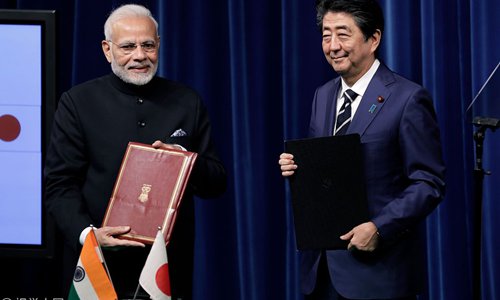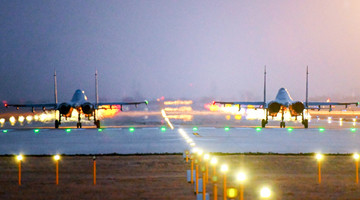
Warships from the Indian Navy and the Japanese Maritime Self Defense Force (JMSDF) conducted a joint exercise in the Indian Ocean on June 27, reported Indian media. Being described as a routine tactical training, the joint exercise was of a small scale with a limited number of forces from both sides, including the INS Rana (D52) and INS Kulish(P63), as well as JMSDF’s JS Kashima (TV-3508) and JS Shimayuki(TV-3513), all training ships. The subjects of the exercise were not complicated either, mainly on tactical training and communication.
Recently, India has had military clashes in several strategic directions with China, Pakistan, and Nepal. Against such a background, New Delhi hopes to take the joint exercise with Japan as an opportunity to stir hard-line public opinions in the country to reinforce its political stance.
But this kind of agitation is actually a double-edged sword for India. It will boost its confidence, but will also stimulate nationalistic sentiments in the country that will eventually harm India’s interests.
Over recent years, both India and Japan have the strategic need to expand the scope of their regional footprints and influence, and the two countries have seen closer defense security relations and faster development of mil-to-mil relations motivated by the US-initiated “Indo-Pacific strategy”. It is reported that the latest joint exercise is the 15th of its kind between Tokyo and New Delhi in the past three years. They also held a joint land exercisein 2018 and the Japan-India 2+2 Foreign and Defence Ministerial Meeting was conductedin 2019. The two sides are in talks about an agreement on military logistics support.
Such intimacy stems from their shared strategic interests and needs.
Washington’s promotion of the Indo-Pacific Strategy has given a strong impetus to the escalation of the India-Japan military relationship. While Japan needs to send its military forces overseas, particularly entering the Indian Ocean to demonstrate its influence in this strategic region, India attaches great importance to its military relationship with Japan too, putting forth the “Look East” policy.
The overall security situation in the Asian Pacific region is relatively stable at present without any massive military conflict or warfare. This is valuable stability that all regional countries should try to preserve.
But if countries in the Asia-Pacific region reduce themselves to pawns in the US-pushed Indo-Pacific strategy, or take such a defensive stance to assist US, even adopting highly targeted and exclusive military actions to some extent, that will undoubtedly exert adverse effects on regional security and stability.
(The author Wang Baofu, a former professor majoring in military strategy at the National Defense University of the PLA, is a special expert on the CCTV Military Channel.)
Disclaimer: This article is originally published on cnr.cn and translated from Chinese into English and edited by the China Military Online. The information, ideas or opinions appearing in this article do not necessarily reflect the views of eng.chinamil.com.cn.









